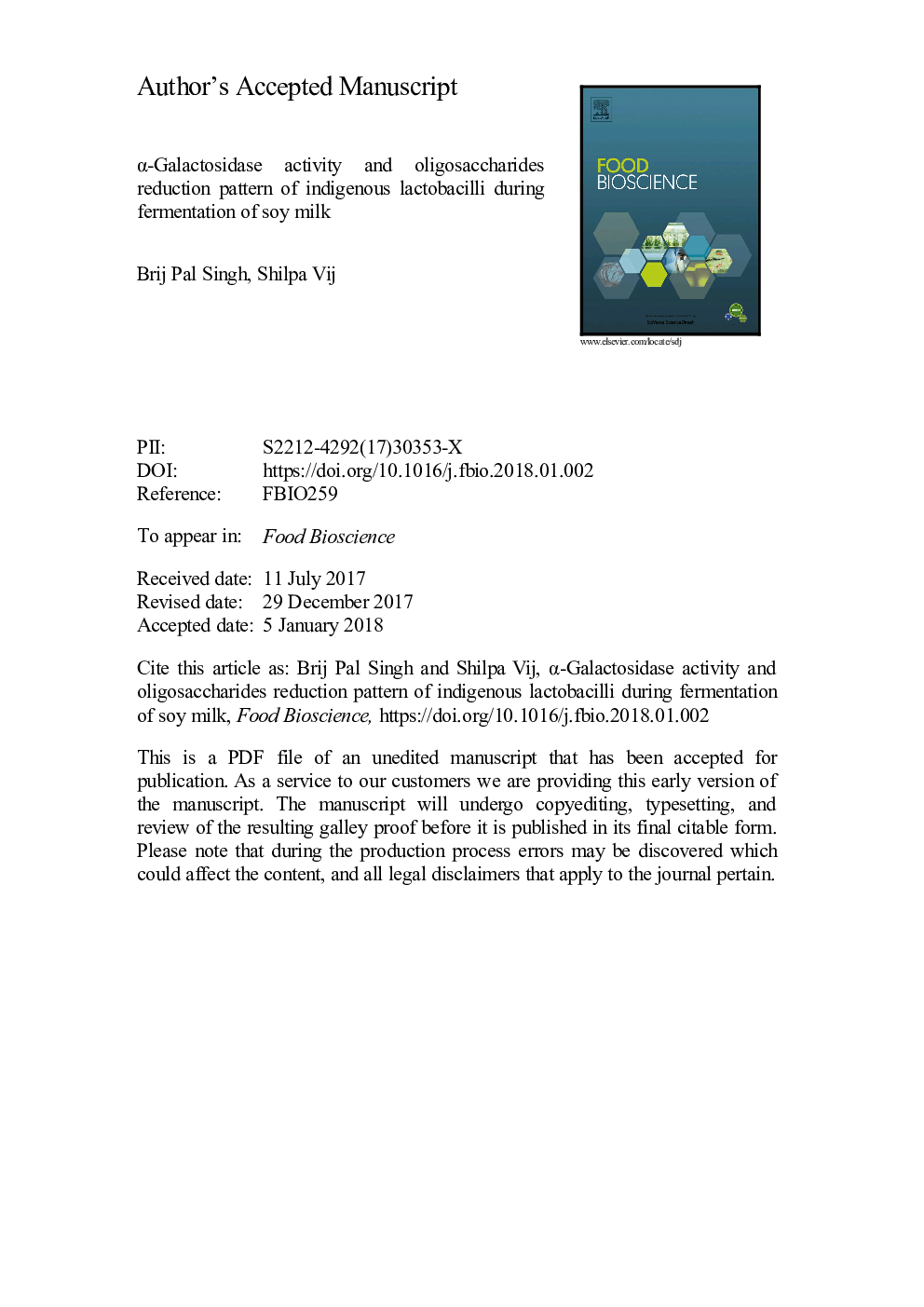| Article ID | Journal | Published Year | Pages | File Type |
|---|---|---|---|---|
| 6488875 | Food Bioscience | 2018 | 16 Pages |
Abstract
Soy milk, a water extract of soybean, can provide a plentiful and inexpensive supply of proteins. Besides, other nutritive components such as lipids, vitamins, minerals, isoflavones, flavonoids, saponins, and bioactive peptides found in soy milk are known to have therapeutic values. Conversely, the presence of indigestible oligosaccharides and beany flavor have limited the wide consumption of soy milk. α-Galactosidase enzyme are known to hydrolyze these flatulence causing oligosaccharides. In this context, this study evaluated the α-galactosidases production potential and oligosaccharides reduction pattern of six Lactobacillus isolates during growth in soy milk. All the strains were efficiently grown in soy milk with viable count ranging from 5.7 to 10.4 Log10 cfu/ml during 24 h of fermentation. All the strains were found proteolytic in nature represented varied degree of proteolysis at each fermentation step investigated. The highest proteolysis was observed by LR C34 (638.56 ± 7.9 µg serine/ml) after 24 h of fermentation. Among studied Lactobacillus strains LR C8 displayed highest cumulative α-galactosidases activity between 6 and 18 h of incubation. Correspondingly, the highest utilization of sucrose and stachyose was also showed by LR C8. Overall, sucrose and raffinose were reduced maximum upto 24 h of fermentation in comparison to stachyose by studied lactobacilli. Interestingly, more than 90% reduction in stachyose given by LR C8 was significantly higher (P < 0.001) than other strains, which recorded less than 37% utilization of said tetrasaccharide. Thus, these strains can be further explored for the preparation of soy based functional fermented foods and bioactive food supplements.
Related Topics
Physical Sciences and Engineering
Chemical Engineering
Bioengineering
Authors
Brij Pal Singh, Shilpa Vij,
